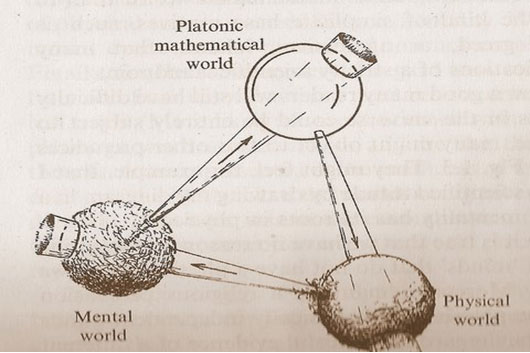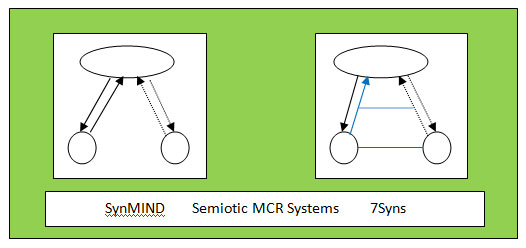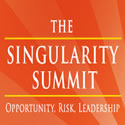ENVISIONING LEADERSHIP:
INITIATING NOTES -JRH
“Imagining the Future of Leadership and/or Leading the Imagining of the Future”

Edited/Interpreted by JRH (3-12-9/4-4-9) from
TRIBAL LEADERSHIP by Logan, King, and Fischer-Wright
retrieved on 4-4-9 from
http://triballeadership.net/book.php
and
THE THREE LAWS OF PERFORMANCE by Steve Zaffron and Dave Logan
retrieved on 3-12-9 from the blog of Michael F. Martin, February 16, 2009, at
http://brokensymmetry.typepad.com/broken_symmetry/2009/02/the-three-laws-of-performance-by-zaffron-and-logan.html
Tribal Leadership presents the thesis that the health of organizations correlates with growth in the average number of connections between members of the organization over time.
“Every company, indeed, every organization, is a tribe, or if it’s large enough, a network of tribes—groups of twenty to 150 people in which everyone knows everyone else, or at least knows of everyone else. Tribes are more powerful than teams, companies, or even CEOs, and yet their key leverage points have not been mapped—until now.
In a rigorous ten-year study of approximately 24,000 people in more than two dozen corporations, Logan, King, and Fischer-Wright refine and define a common theme: the success of a company depends on its tribes, the strength of its tribes is determined by the tribal culture, and a thriving corporate culture can be established by an effective tribal leader.
Tribal Leadership shows leaders how to assess their organization’s tribal culture on a scale from one to five and then implement specific tools to elevate the stage to the next.”
The Three Laws of Performance provides a list of rules (and stories explaining how they work in practice) that promise to help individuals in leadership roles facilitate the group coherence and cohesion that are necessary to bring about transcendent performance.
“The power in this book stems from using the Three Laws of Performance. A law isn’t a rule, tip, or step, but distinguishes the moving parts at play behind an observable phenomenon. A law is invariable. Whether you believe in gravity or not doesn’t lessen its effect on you.
The greatest advances in history have come from applying newly discovered laws. Think of Newton’s three laws of physics. Each on its own is interesting and insightful, and when combined together and applied, they become powerful and predictive.
When the Three Laws in this book are applied, performance transforms to a level far beyond what most people think is possible. It doesn’t happen bit by bit, but all at once, as individuals and organizations rewrite their future.” Retrieved on 3-12-9 from
http://www.threelawsofperformance.com/transformational_leadership_excerpt.jsp
Both of these books promote a systems model for explaining individual and group performance. According to the systems model, there is no particular habit or activity that will guarantee an individual who practices it better performance or more creativity. The reason for this is that whereas an individual produces the performance or creative work, the work must then be evaluated and accepted by the field of experts for the symbolic domain of the performance before it can become a part of that domain. In other words, transcendent performances (including creative works and the accomplishment of challenging business goals) require collaboration between individuals and groups. Growth (or decay) results as groups and the individuals who constitute them evolve to tackle successively more complex goals.
The First Law Of Performance holds that how people perform correlates to how situations “occur” to them.
So what exactly does occur mean? We mean something beyond perception and subjective experience. We mean the reality that arises within and from your perspective on the situation. In fact, your perspective is itself part of the way in which the world occurs to you. “How a situation occurs” includes your view of the past (why things are the way they are) and the future (where all this is going).”
Roger Penrose’s Road to Reality:

This image from Penrose recalls the Triad of C. S. Pierce, a core structure of the AutoGnome(TM) and a precursor of the MultiCoRelational Systems of J. R. Hamann emphasizing the
TriRelational Form

in Synthesizing Mind as the Pre-eminent First of the The 7SYNs: Strategic Viewpoints of Possible Relational Futures {Re-Creating the Universe Virtually}: see
http://relatedone.blogspot.com/

[The use of circles and lines in this drawing represent systems and relations, respectively, whereas the oblong figure can represent either]
So should seeing things this way make any difference in how we act?
The answer is yes because as Werner Erhard knew well, it is possible to change the loop by convincing individuals to change how they understand their past and forecast their future, especially as it relates to others within the group. As the Author’s Note makes clear, part of the intellectual history of this book is derived from the knowledge and experience of people who worked with Erhard in the est seminars popular several decades ago. Incidentally, that inheritance might also explain the willingness to leave some terminology inscrutable. Part of the ethics of est seems to have involved challenging the audience to engage with the teaching intellectually — a practice best exemplified by Socrates and worst exemplified by Heidegger, both of whom might also be considered antecedents to this sort of philosophy.
The remaining two laws basically spell out a prescription for how to implement transformational change within an organization given that the systems model applies.
The Second Law Of Performance holds that “how a situation occurs arises in language.”
This is the Sapir-Whorf hypothesis, which is now an accepted fact at least among cognitive psychologists.
The Third Law Of Performance holds that “future based language transforms how situations occur to people.”
In other words, when enough individuals working within a domain decide to change the domain, then the domain and hence the activities of the individuals and groups that constitute it will shift into a different mode of operating. What is perhaps less intuitive is the fact that such shifts may occur voluntarily when enough individuals agree to make them happen. That’s another reason why this book should be read in conjunction with Tribal Leadership.
ENVISIONING LEADERSHIP: Imagining the Future of Leadership and/or Leading the Imagining of the Future
The foregoing laws might be summarized simply as follows: The 1st – “How a situation occurs” assumes a TriRelational Form; The 2nd – The Form is a TriRelational Semiotic (language) System; The 3rd – A TriRelational Semiotic Envisioning Act Transforms “How a situation occurs” in the 1st Law.
The Mission is to form an environment in which an Envisioning Act might Transform “How a situation occurs” as an enabling act for individuals to personally recognize how to Envision Leadership in Intelligizing the Three Laws of Performance through the VirtualMind (IntelliSite) Development Hierarchy as per the following:








Wed, May 13, 2009
0 Comments